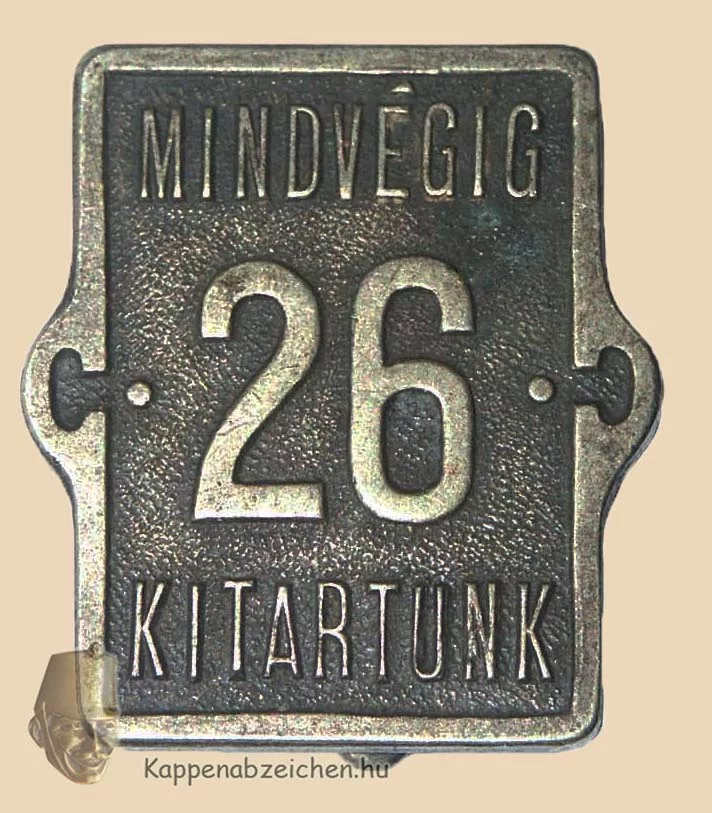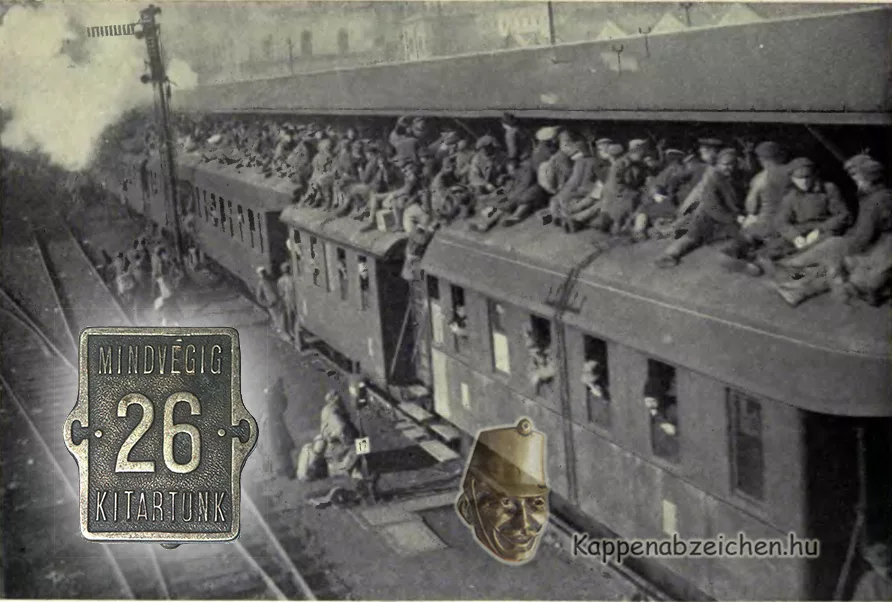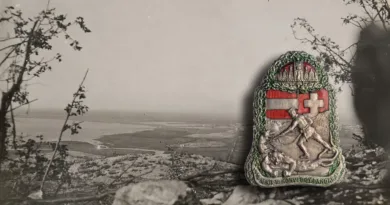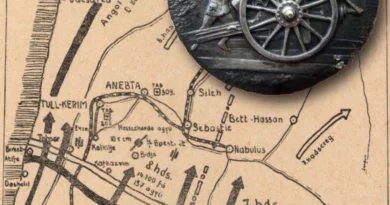October 1918
So, I chose a badge that has always been very shocking to me and resonates for this month. This is the beautiful insignia of the 26th Infantry Regiment in its simplicity with the caption, “We will endure till the end!”. Of course, the text was not meant to be the last great sigh of the losing war, but rather referred to the faithful persistence despite of the endless series of trials. But still, the final hour came, when the vow also ended: the armed forces of the Monarchy laid down their arms.

There is no point in picking out even one of the disasters that happened this month, either in the Balkans or in Italy. Unfortunately, these did not happen by chance. The appearance of the USA on the European battlefields shifted the military balance of power definitively in favor of the Entente. This naturally resulted in the military defeat of the Central Powers. Rather, I would like to raise what the soldiers who returned to their home country after the collapse found at home in Hungary.
I believe that the communist propaganda, which was already strongly percolating from Russia at the time, probably did not take root among the soldiers living in rural, village conditions, who made up the majority of the crews of the Hungarian regiments. These peasants could still be mobilized, they would have remained ready to fight if there had been someone to hold them together. Unfortunately, there were not many such leaders. The Károlyi government was deceived by the promises of the Entente and ordered a general disarmament, despite the fact that the victors repeatedly violated the armistice agreements. This is how the Romanian invaders were able to reach the Tisza river.
For me, the most bitter fact was that in the spring of 1919, in the hours of Hungary’s agony, despite the government’s will it was possible to keep relatively larger, intact troops in four places. However, they did not unite, and some of them did not even participate in the armed resistance at that time. They just waited, like Miklós Horthy’s troops in Szeged or the royalist Colonel Antal Lehár’s volunteers in Western Hungary. Only the Székely Division undertook a meritorious fight. Without their resistance, the Romanians might have reached the Great Plain by Christmas. From the end of March 1919, the fourth military force was the army of the Hungarian Soviet Republic, which was joined by many soldiers who were desperate about the fate of their country and had a non-communist attitude. Turkey’s successful resistance after the war shows that those who did not wait for the benevolence of the Entente, were able to achieve results by showing strength.
But back to the badge, now is the time to reflect on the sad ending, after which there was no longer any point in pinning this badge on the cap. This reflection also applies to the further fate of the site. The war months are gone, but so is the Kappenabzeichen and photo material that kept the site alive. I think that I will keep the page active, from time to time I will upload new materials to the other sections, but not with the same regularity as before. I thank the readers for “sticking it out”! Continue to follow the new posts, even if they become a little less frequent!




